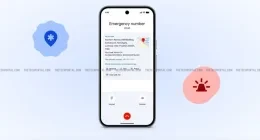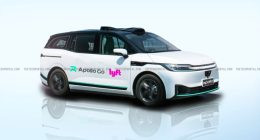Digital marketing trends will accelerate rapidly during 2025, establishing new patterns in industry advancement. Today’s brands consider push ads their preferred marketing solution to fight for consumer focus in this overwhelming media market of options.
This article examines push ads in 2025 by explaining their strengths through technical applications and identifying potential misuse issues.
The Rise of Personalized Push Ads
Advertising methods continually advance through specific consumer choice understanding to develop product-to-customer alignments. Modern Artificial Intelligence capabilities together with improved data collection methods let advertising companies deliver content that connects with individual customer preferences and behavioral patterns.
Our forecast indicates that push ads will see remarkable growth through 2025 thanks to the application of real-time user data which produces customized content that matches what users need exactly. When users encounter customized content they enjoy their interactions more and drop out of websites less frequently producing increased commercial success. Personalized push notifications achieve a 93% retention rate which indicates users hold consistent interest in the app during its lifespan.
Enhanced Interactivity and Engagement
Advertising through static push methods ceased to exist in past years. The technology behind push advertising will develop to include heavier interaction which will enable consumers to engage with content more easily by 2025. Touchable buttons together with functional swipeable carousels along with embedded videos will make push ads more immersive for users. These interactive elements both seize the attention of consumers and drive them toward desired actions such as purchases newsletter subscriptions and new product exploration. Push notifications have an average click-through rate (CTR) of 28%, whereas email marketing has a CTR of around 3%.
The Role of AI and Machine Learning
Machine learning and AI will execute a total transformation of push ads space by 2025 rendering all other marketing approaches inferior to push ads. Key points include:
- Predictive Analytics: Through predictive analytics algorithms AI uses collected consumer data to determine personal preferences before delivering real-time targeted push advertisements.
- Real-Time Optimization: The real-time monitoring capabilities of machine learning will optimize ad campaigns to ensure maximum results while increasing return on investment.
- Personalization: AI-driven designs built through personalization-enabled push ads offer higher standards by delivering customized advertising content designed for each user’s individual profile data.
- Efficiency: Automated processes will streamline ad creation and distribution, saving time and resources.
- Consumer Insights: Brand marketing utilizes this new technology to generate forceful advertising messages that reach their carefully chosen demographic targets.
This advancement will allow market planners to access deep customer behavior insights which helps them build valuable marketing strategies. Push notifications generate an open rate of 20% which surpasses traditional email marketing rates sitting at under 4%.
The Impact of 5G and IoT
The convergence of 5G technology with IoT devices by 2025 will produce an unprecedented transformation of push ads. Here are the key impacts:
- Faster Delivery: Ultra-fast speeds deliver push ads right away to provide users with seamless delivery.
- Omnichannel Presence: Through IoT devices such as smartwatches and connected home appliances the push allows ads to spread across various touchpoints.
- Personalization: Brands can build customized push advertisements through IoT source data which matches users’ behaviors and individual preferences.
- Enhanced Interactivity: Push ads that run through 5G networks enable users to access video and interactive format content.
Optimal push advertising performance will find its way into consumer digital lives through advancements in technology.
Challenges and Ethical Considerations
The operational benefits of push advertising materials are clear but call for proper oversight because of their specific ethical implications and critical matters dilemmas.
- Data Privacy: Our data is more available than ever before which has evolved into a serious point of concern. Company success depends on transparent data explanations coupled with compliance with new privacy standards to develop enduring customer trust.
- Intrusiveness: How marketers choose to view their promotion efforts decides if their advertising material appears as positive or negative to consumers. To achieve marketing success companies must identify the precise point at which ads become beneficial yet remain tolerable to their user community.
- User Consent: The system requires users to explicitly disclose permission before turning on push advertising functions. Users both determine when push ads display and simultaneously fulfill legal requirements.
- Ad Fatigue: Users may completely ignore push ads if these ads play too frequently. Repeated notifications force users to no longer acknowledge them even after their initial discoverability. The task of finding ideal push message delivery lengths presents itself as a business challenge since unsuitable strategies may result in lost customer trust.
- Ethical Targeting: The ethical guidelines of advertising instruct us to guard vulnerable audiences from unwanted advertising while prohibiting ads supporting harmful conduct during repeated screenings.
Conclusion
2025 will produce extensive changes in marketing behavior and consumer choice dynamics through the use of push ads. The combination of AI systems with machine learning technology alongside 5G networks allows us to develop user-friendly customized push ads experiences.
Brand operators need to recognize both the advantages and ethical implications of this new advertising format. Future push advertising will deliver stronger results by both trending with modern times and establishing genuine bonds with customers.




